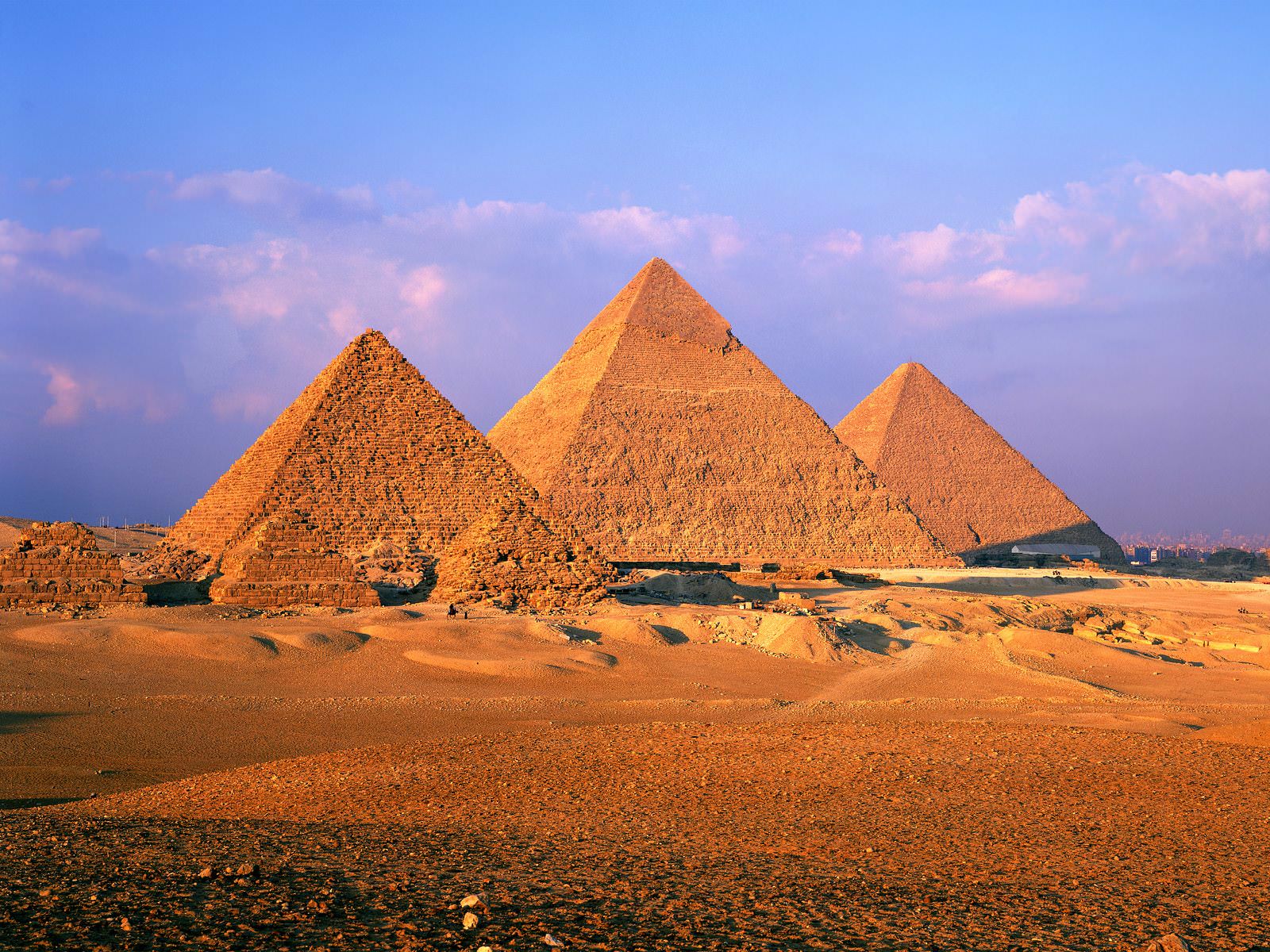
Giza, a name that echoes with the grandeur of antiquity, stands as an enduring testament to the ingenuity and spiritual depth of ancient Egyptian civilization. Located on the west bank of the Nile, opposite central Cairo, this region has captivated the human imagination for millennia, serving as the necropolis for several pharaohs during the second millennium BC. It is the storied ground where some of the world’s most impressive ancient monuments rise against the desert sky, including the Great Sphinx and the iconic pyramids. Far from being a static tableau of ancient history, the Giza Plateau continues to yield its secrets, offering archaeologists and historians new perspectives on its construction, its inhabitants, and its profound cultural significance. Each shovel of sand, every meticulously cataloged artifact, brings us closer to understanding the lives and beliefs of those who shaped this extraordinary landscape.
The Giza Plateau, renowned globally as the site of the Great Pyramid of Giza, the Great Sphinx, and numerous other large pyramids and temples, has always been a focal point in Egypt’s history. Its proximity to Memphis, the ancient pharaonic capital of the Old Kingdom, underscored its strategic and spiritual importance. While the colossal structures themselves speak volumes of ancient power and ambition, it is the ongoing process of discovery—the careful uncovering of details about daily life, religious practices, and the sheer human effort involved—that continually enriches our appreciation of this UNESCO World Heritage site.
Embark with us on an enthralling journey through recent insights and enduring facts about Giza, exploring the monumental achievements and the subtle, yet equally significant, revelations that continue to reshape our understanding of this miraculous ancient city. We will delve into the very fabric of the plateau, from the majestic resting places of kings to the humble abodes of the workers, painting a vivid picture of a civilization at its zenith, leaving behind a legacy that continues to inspire awe and wonder.
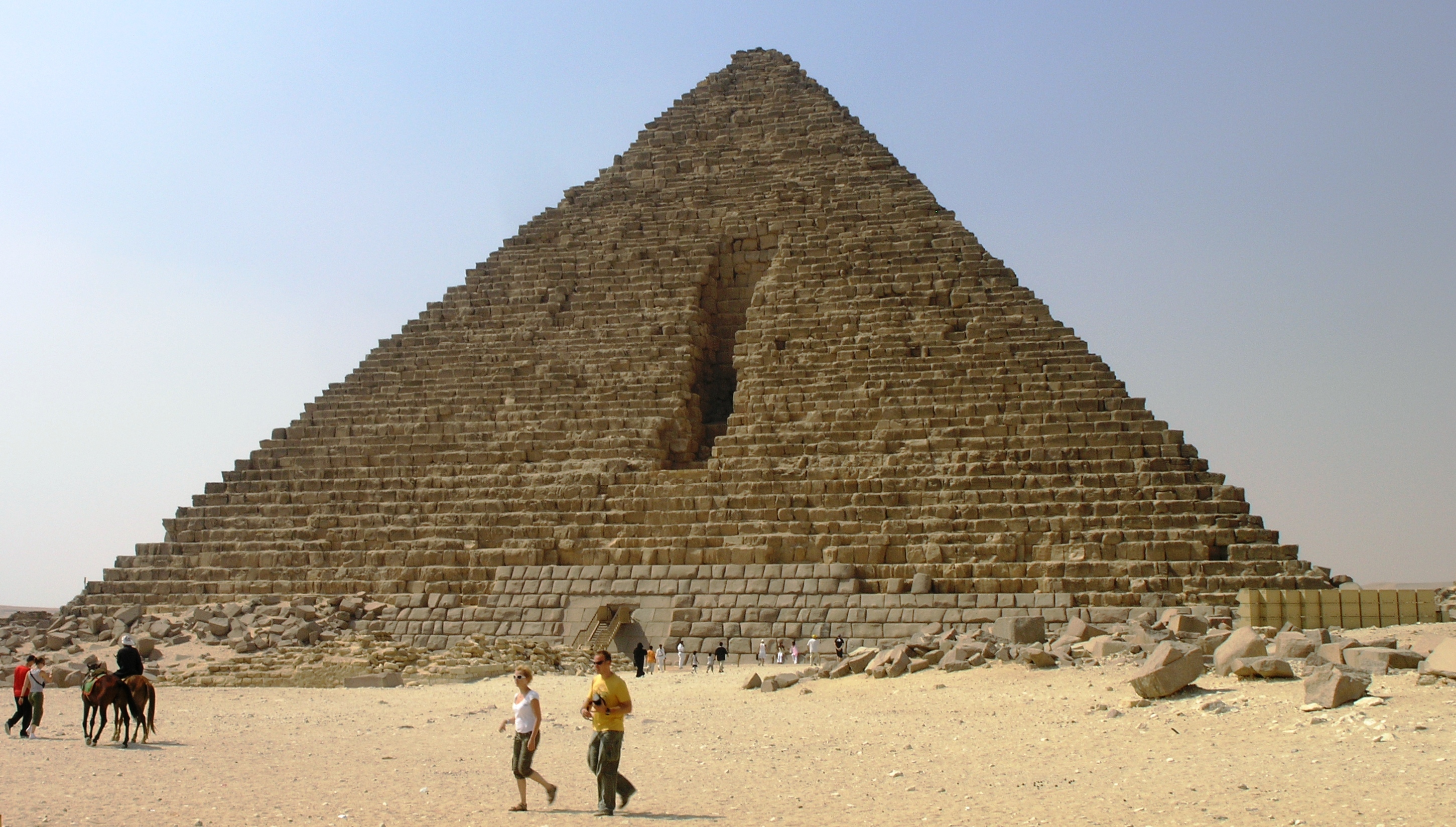
1. **The Original Grand Design of the Giza Necropolis**: The Giza Plateau, southwest of modern Cairo, was meticulously planned as the necropolis for the royalty of the Old Kingdom of Egypt. The original layout of this sacred burial ground was conceived with extraordinary precision and skill, reflecting a profound understanding of architecture and astronomy. This grand design laid the foundation for what would become one of the most organized and awe-inspiring funerary landscapes in human history, featuring the monumental pyramids of Khufu, Khafre, and Menkaure as its central elements.
However, the pristine symmetry of the initial blueprint did not last forever. As the Giza Plateau became synonymous with the great kings and their magnificent pyramids, it began to attract less prominent officials, those of lower rank but still possessing significant wealth and prestige. These individuals, eager to secure a burial plot in such an esteemed location, often disregarded the original schematics. They had their tombs dug wherever space was available, leading to a proliferation of grave complexes that were not authorized by the very kings who had initiated the famed pyramid constructions. This unplanned expansion ultimately transformed the necropolis into a rich tapestry of archaeological material, a fascinating blend of order and organic growth.
Furthermore, archaeological evidence suggests that the Giza site was utilized for burials much earlier than the Fourth Dynasty. Discoveries such as the tomb of King Djet, found towards the edge of the plateau, indicate use as early as the First Dynasty of Egypt. Inscriptions even relate how King Khufu, in preparation for building the Great Pyramid, had to clear many pre-existing tombs and grave complexes. This reveals that Giza was a sacred landscape with a long history of funerary significance, constantly evolving through successive generations of rulers and officials.
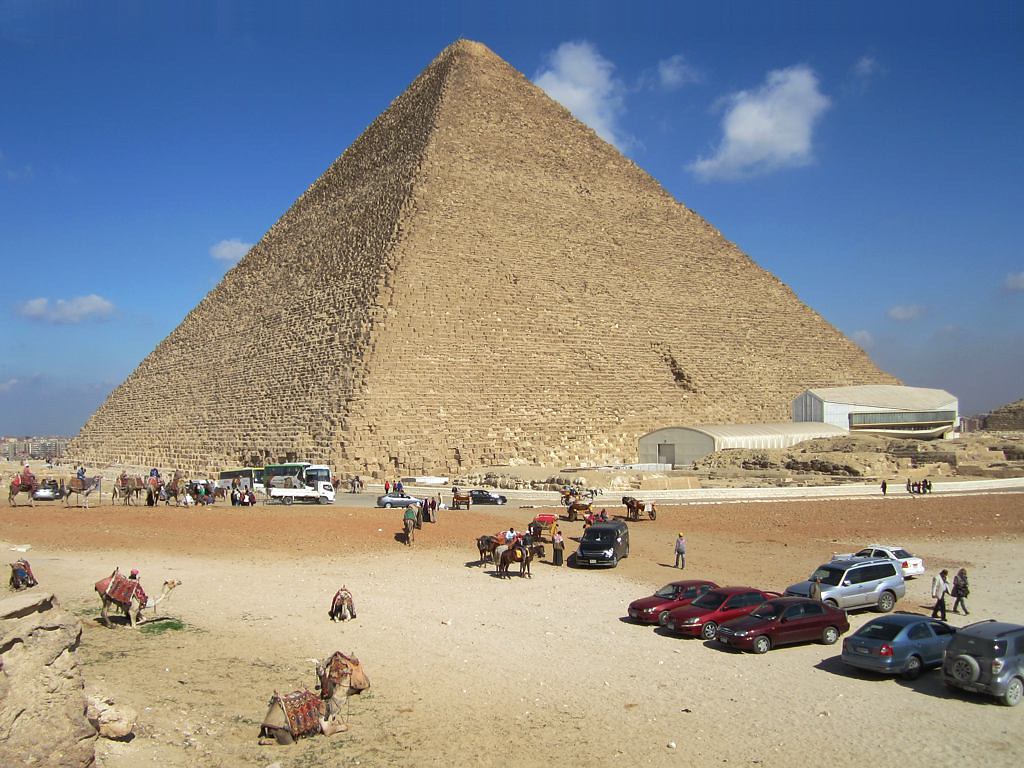
2. **The Great Pyramid of Khufu: An Engineering Marvel Unveiled**: The Great Pyramid of Khufu, also known by its Greek name Cheops, stands as a solitary sentinel, the last remaining of the ancient Seven Wonders of the World. Rising to an original height of 481.4 feet (147 meters), with each side at its base averaging 755.75 feet (230 meters), it is the most colossal single building ever erected on the planet. Its sheer scale and the precision of its construction continue to confound and amaze modern engineers and architects, demonstrating an unparalleled mastery of ancient technology and organization.
The core of this monumental structure is primarily composed of yellowish limestone blocks, providing its incredible bulk and stability. For the outer casing and inner passages, a finer, light-colored limestone was used, lending the pyramid a smooth, reflective surface in its original state. The interior burial chamber, designated as the King’s Chamber, showcases an even higher level of craftsmanship, being built of huge blocks of granite. Approximately 2.3 million blocks of stone were meticulously cut, transported, and assembled to create this 5.75-million-ton edifice, a feat that speaks volumes about the technical skill and engineering ability of the Fourth Dynasty craftsmen.
Indeed, the Great Pyramid is a masterpiece of technical skill. The internal walls, along with the few outer-casing stones that have remarkably remained in place, exhibit finer joints than any other masonry constructed in ancient Egypt. Its sides rise at an angle of 51°52′ and are accurately oriented to the four cardinal points of the compass, a testament to the advanced astronomical knowledge and surveying skills of the builders. Although largely stripped of its smooth white limestone casing over the millennia for use in later building projects, its grandeur remains undiminished, its current height of 451.4 feet (138 meters) still towering over the landscape.
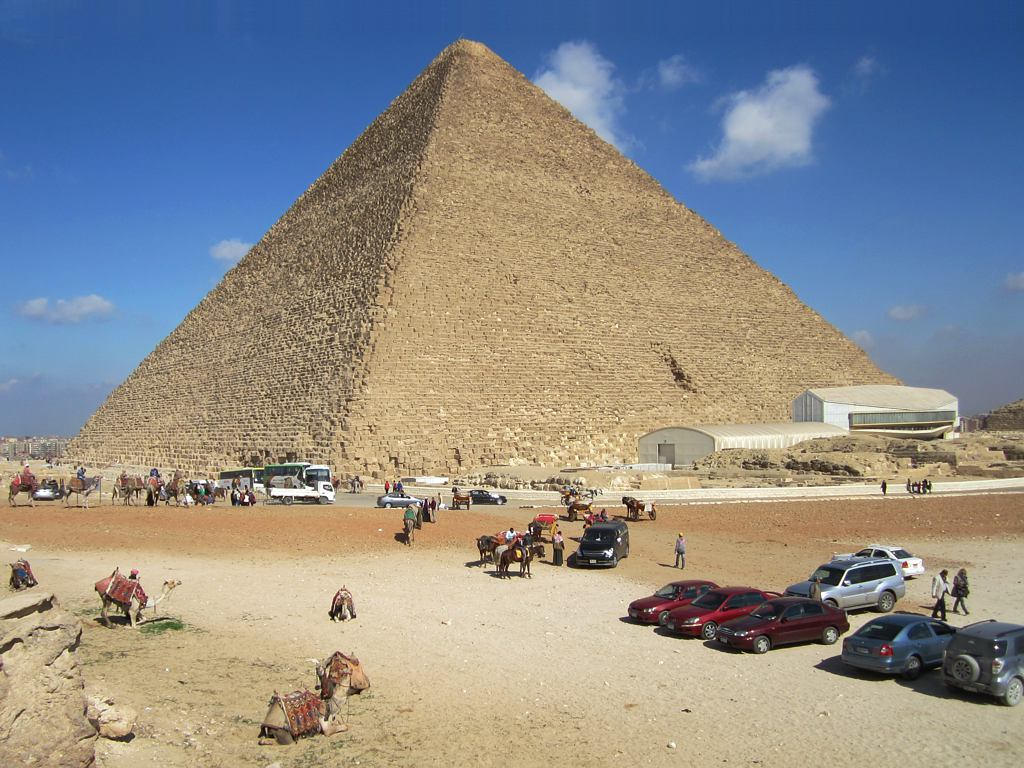
3. **The Enigmatic Pyramid of Khafre and Its Lasting Casing**: Situated centrally on the Giza Plateau, the Pyramid of Khafre, built for the fourth king of the eight rulers of the 4th dynasty, presents another awe-inspiring spectacle. This structure measures an impressive 707.75 feet (216 meters) on each side and originally reached a height of 471 feet (143 meters). While slightly smaller than its colossal neighbor, Khufu’s pyramid, Khafre’s monument possesses its own distinct and enduring charm, deeply integrated into an expansive funerary complex that commanded great respect and veneration.
One of the most striking features of Khafre’s pyramid, and a unique insight into the original appearance of all the pyramids, is the retention of its outer limestone casing. Unlike the other pyramids, which have been almost entirely stripped of their smooth white limestone, Khafre’s monument still displays a portion of this original casing at its topmost section. This allows us a rare glimpse into how these monumental structures once gleamed under the Egyptian sun, reflecting light brilliantly, a sight that ancient writers frequently marveled at and which adds to the mystique of the entire plateau.
Constructed adjacent to the pyramid was a mortuary temple, an essential component of the pharaoh’s eternal resting place. This temple was connected via a sloping causeway to a valley temple situated on the edge of the Nile floodplain, creating an intricate network for funerary rituals and offerings. Moreover, the Great Sphinx, with its powerful presence, is thought to have been an important part of Khafre’s funerary complex, guarding the sanctity of the entire site and embodying the king’s enduring power and divine connection.

4. **Menkaure’s Pyramid: The Smallest, Yet Significant, Structure**: The southernmost and final pyramid to be constructed within the illustrious Giza complex belongs to Menkaure, the fifth king of the 4th dynasty. Though it is the smallest of the three principal pyramids, each side measuring 356.5 feet (109 meters) and reaching a completed height of 218 feet (66 meters), its significance is in no way diminished. It completes the triad of grand monuments, offering a narrative of evolving scale and architectural ambition within the Old Kingdom.
Like its predecessors, Menkaure’s pyramid was originally encased in polished limestone, though today it stands without any of its original covering. All three pyramids suffered extensive plundering, both internally and externally, during ancient and medieval times. This stripping away of the precious outer casing of smooth white limestone meant that the grave goods originally deposited in the burial chambers were lost, and the pyramids no longer stand at their original, majestic heights, a stark reminder of the passage of time and the covetousness of later generations.
Near Menkaure’s pyramid, a mortuary temple was also constructed, echoing the elaborate funerary architecture seen with Khufu and Khafre. These temples, linked to valley temples by causeways, formed a crucial part of the royal funerary cult, where priests performed rites for the deceased pharaoh. Subsidiary pyramids, used for the burials of other members of the royal family, further dotted the landscape around Menkaure’s complex, illustrating the hierarchical and familial structure of the ancient Egyptian court and its afterlife beliefs.
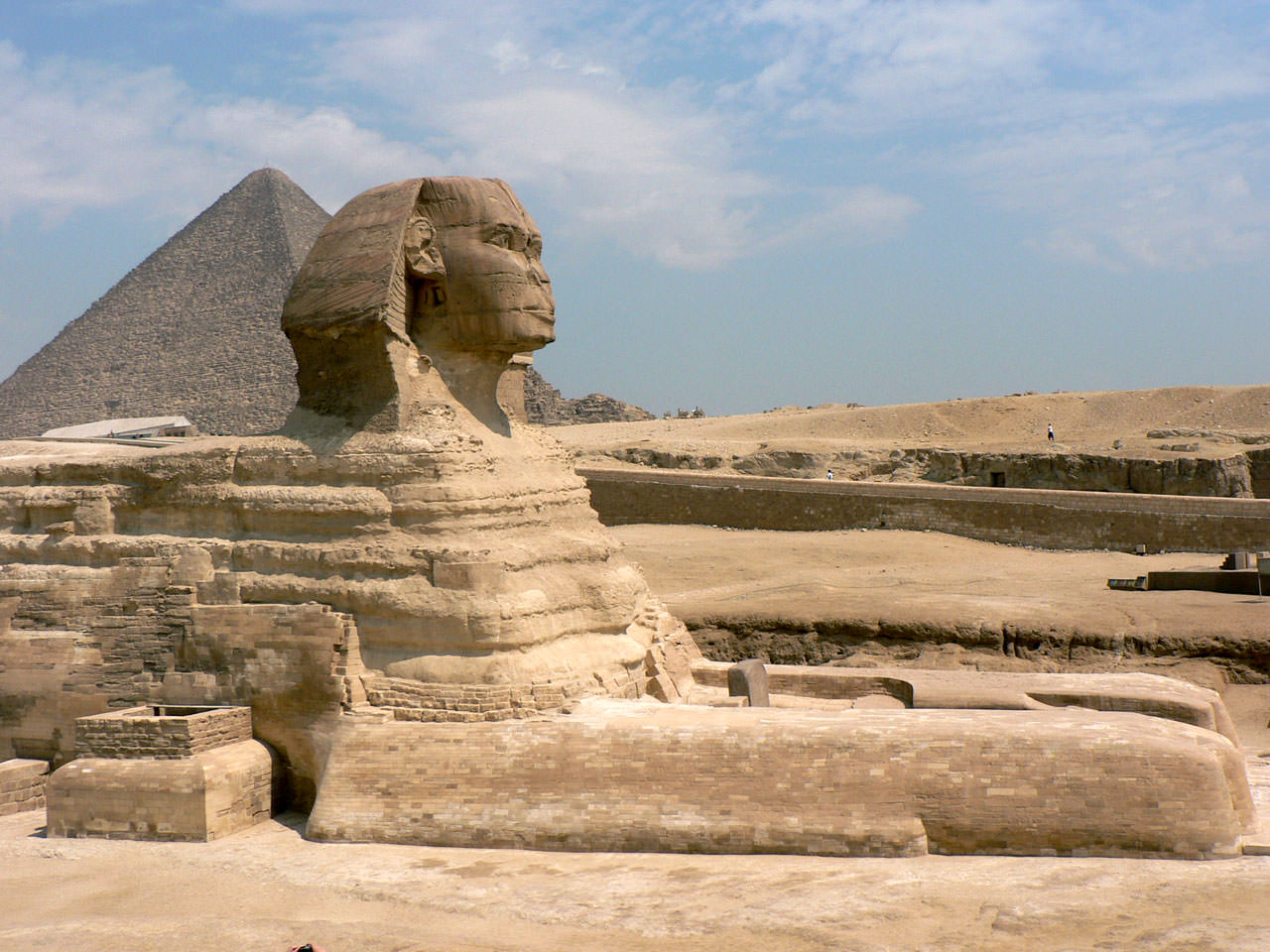
5. **The Great Sphinx: Guardian of Giza’s Secrets**: To the immediate south of the Great Pyramid, and strategically positioned near Khafre’s valley temple, rests one of the most iconic and enigmatic monuments of ancient Egypt: the Great Sphinx. Carved directly out of the natural limestone bedrock of the Giza Plateau, this colossal sculpture embodies a fascinating fusion of human intellect and leonine strength. It is approximately 240 feet (73 meters) long and stands an imposing 66 feet (20 meters) high, its gaze fixed perpetually eastward, seemingly guarding the ancient necropolis.
The identity of the man whose facial features adorn the Sphinx has been a subject of debate among Egyptologists for centuries. While the prevailing belief suggests that the head of the Sphinx represents King Khafre, signifying his power and divinity, others have contended that it might portray King Khufu. This ongoing discussion only adds to the allure and mystery surrounding this ancient marvel, inviting continuous research and diverse interpretations of its true purpose and symbolism within the Giza complex.
Despite its apparent separation from the main pyramid structures, the Great Sphinx is widely understood to have been an integral and deeply symbolic component of the extensive pyramid complex that once covered the area. Its placement, its orientation, and its connection to Khafre’s mortuary and valley temples reinforce the idea that it served a crucial role in the royal funerary landscape. The Sphinx stands as a silent witness to millennia of history, a potent symbol of ancient Egyptian grandeur and a testament to the enduring power of its creators.
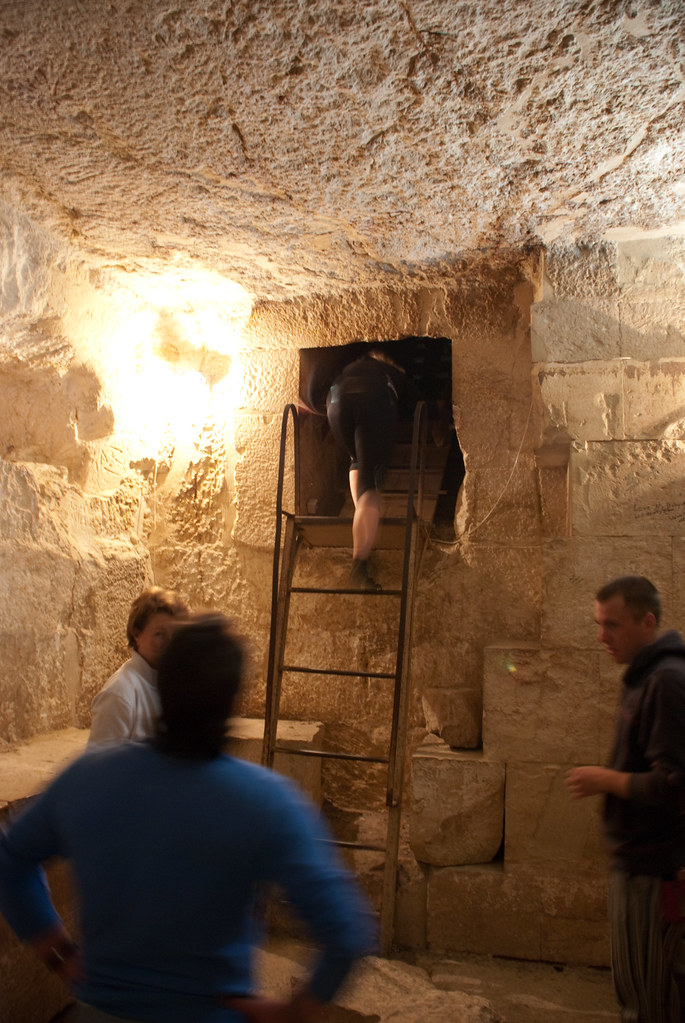
6. **The Royal Burial of Queen Hetepheres I: A Glimpse into 4th Dynasty Craftsmanship**: In 1925, a remarkable discovery was made near the upper end of Khufu’s causeway: a pit tomb containing the transferred burial equipment of his mother, Queen Hetepheres I. This archaeological find provided an invaluable, intimate look into the life and funeral customs of a royal figure from the illustrious 4th dynasty. It offered a rare opportunity to study artifacts that had largely escaped the widespread plundering that befell so many other ancient Egyptian tombs.
At the bottom of a deep, stone-filled shaft, archaeologists unearthed the queen’s empty sarcophagus, a poignant detail suggesting a prior disturbance or perhaps a reburial. However, the true treasure lay in the surrounding furniture and articles of jewelry. These exquisitely crafted items, preserved over millennia, revealed an astonishing level of artistic ability and technical perfection. The intricate designs, the precious materials, and the meticulous execution of each piece underscored the sophisticated craftsmanship that characterized the Fourth Dynasty, a period renowned for its monumental achievements.
The findings from Queen Hetepheres’s tomb offer more than just an inventory of royal possessions; they provide profound insights into the material culture and social hierarchy of the time. The quality of the furniture, the elaborate nature of the jewelry, and the very act of reburying her possessions speak volumes about the reverence accorded to royal figures and the belief in an afterlife demanding such provisions. This discovery remains a cornerstone of our understanding of royal life, wealth, and funerary practices during the zenith of the Old Kingdom.
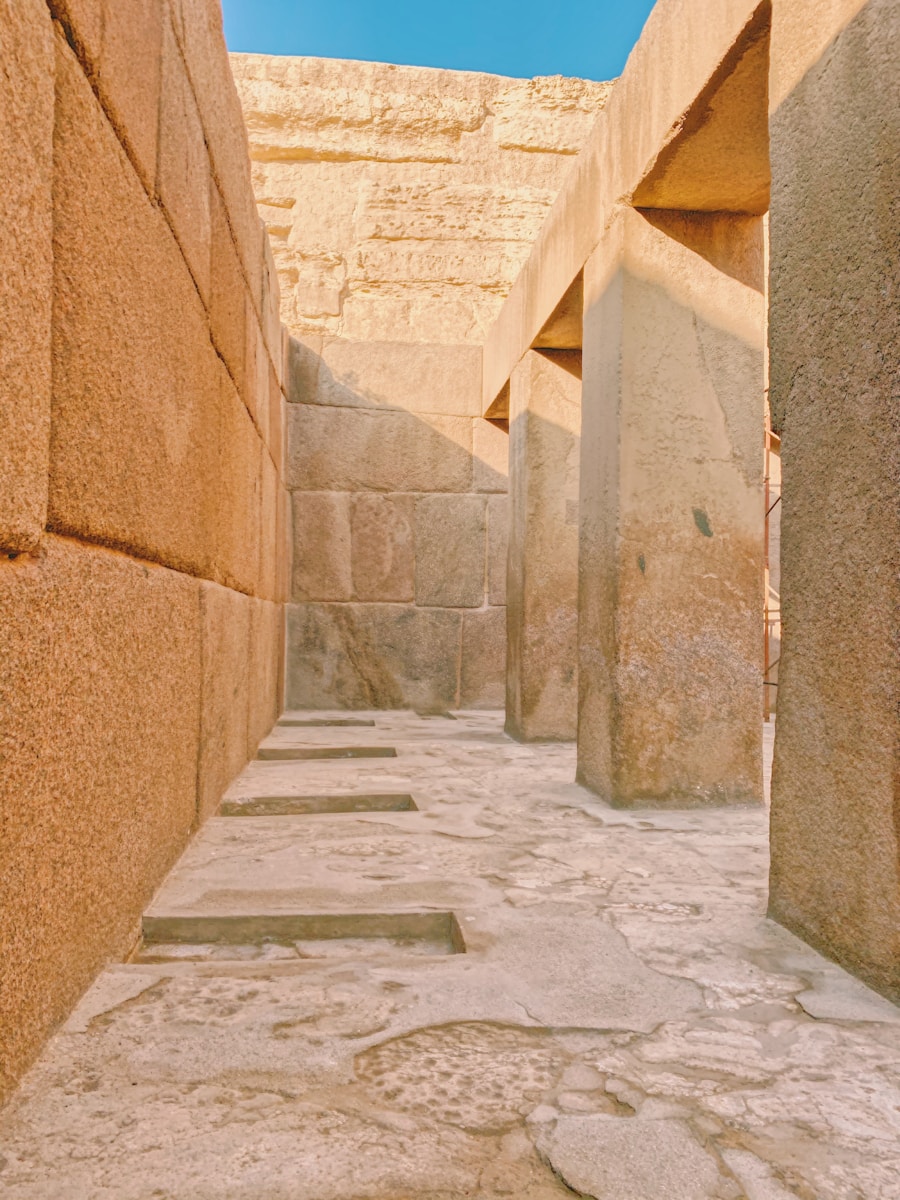
7. **The Vast Necropolis of Mastabas: Uncovering Royal Family and Official Burials**: Beyond the monumental pyramids and the enigmatic Sphinx, the Giza Plateau extends into vast fields of flat-topped funerary structures known as mastabas. These distinctive structures, built in orderly rows and a grid pattern, served as the eternal resting places for relatives and officials of the kings. They form an extensive city of the dead, providing a rich archaeological record that complements our understanding of the royal burials and the broader social fabric of the Old Kingdom.
These mastaba fields are not monolithic; they encompass a wide chronological range. Archaeologists have identified core mastabas dating back to the 4th dynasty, contemporaneous with the construction of the great pyramids. Moreover, numerous mastabas from the succeeding 5th and 6th dynasties (c. 2465–c. 2150 BCE) have been discovered around and among the earlier structures. This continuous use of the necropolis over several centuries highlights Giza’s enduring importance as a prestigious burial ground and offers insights into the evolution of funerary architecture and practices.
The sheer number and arrangement of these mastabas provide invaluable data about the social hierarchy and administrative structure of ancient Egypt. The close proximity of officials and royal family members to the pharaohs’ monumental tombs underscores their importance within the court. Each mastaba, with its internal chambers, relief carvings, and occasional inscriptions identifying the deceased, contributes to a detailed mosaic of ancient Egyptian society, showcasing the lives of those who supported and served the powerful rulers of the Old Kingdom.
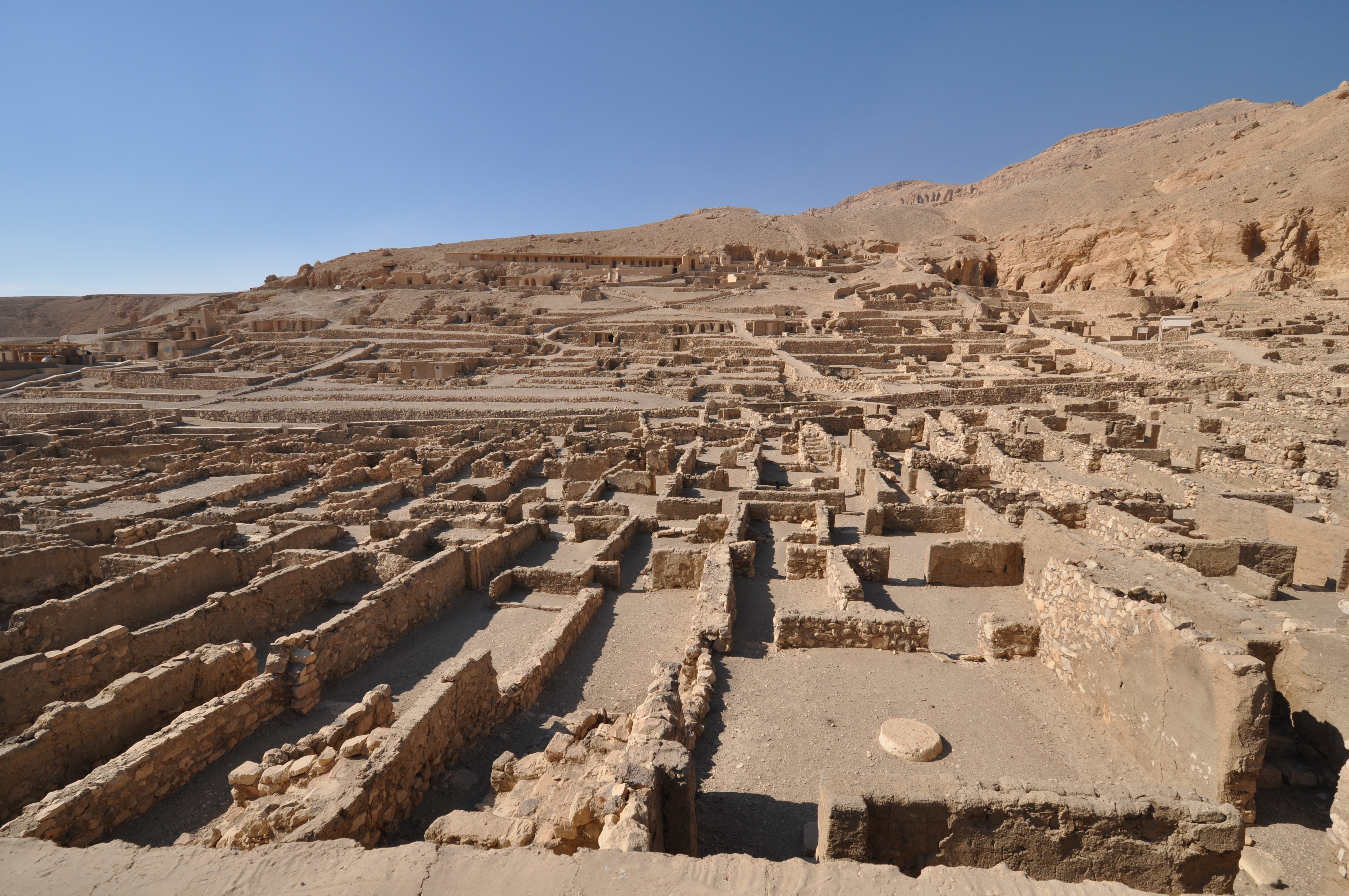
8. **The Workers’ Village: Daily Life and Community at Giza**: Beyond the monumental facades of the pyramids and Sphinx, recent archaeological endeavors illuminate the everyday existence of their builders. Excavations in the environs of the pyramids revealed extensive laborers’ districts, a profound testament to the human effort behind Giza’s grandeur. These findings offer an unprecedented look into the structured communities supporting monumental construction.
These districts, stretching approximately 1300 feet (400 meters) south of the Great Sphinx, were not temporary encampments. They encompassed bakeries, storage areas, and workshops, forming a self-sustaining ecosystem for a substantial workforce. Mud sealings date the workshop areas to the late 4th dynasty, anchoring these bustling ancient industrial zones chronologically.
Khufu’s Village, situated on the far side of the complex, also speaks volumes about meticulous planning. These villages were vibrant hubs where thousands lived and toiled, lives intrinsically linked to pyramid construction. Small tombs of workers and artisans within these areas, sometimes containing statuettes or hieroglyphic inscriptions, offer poignant glimpses into their crucial roles.
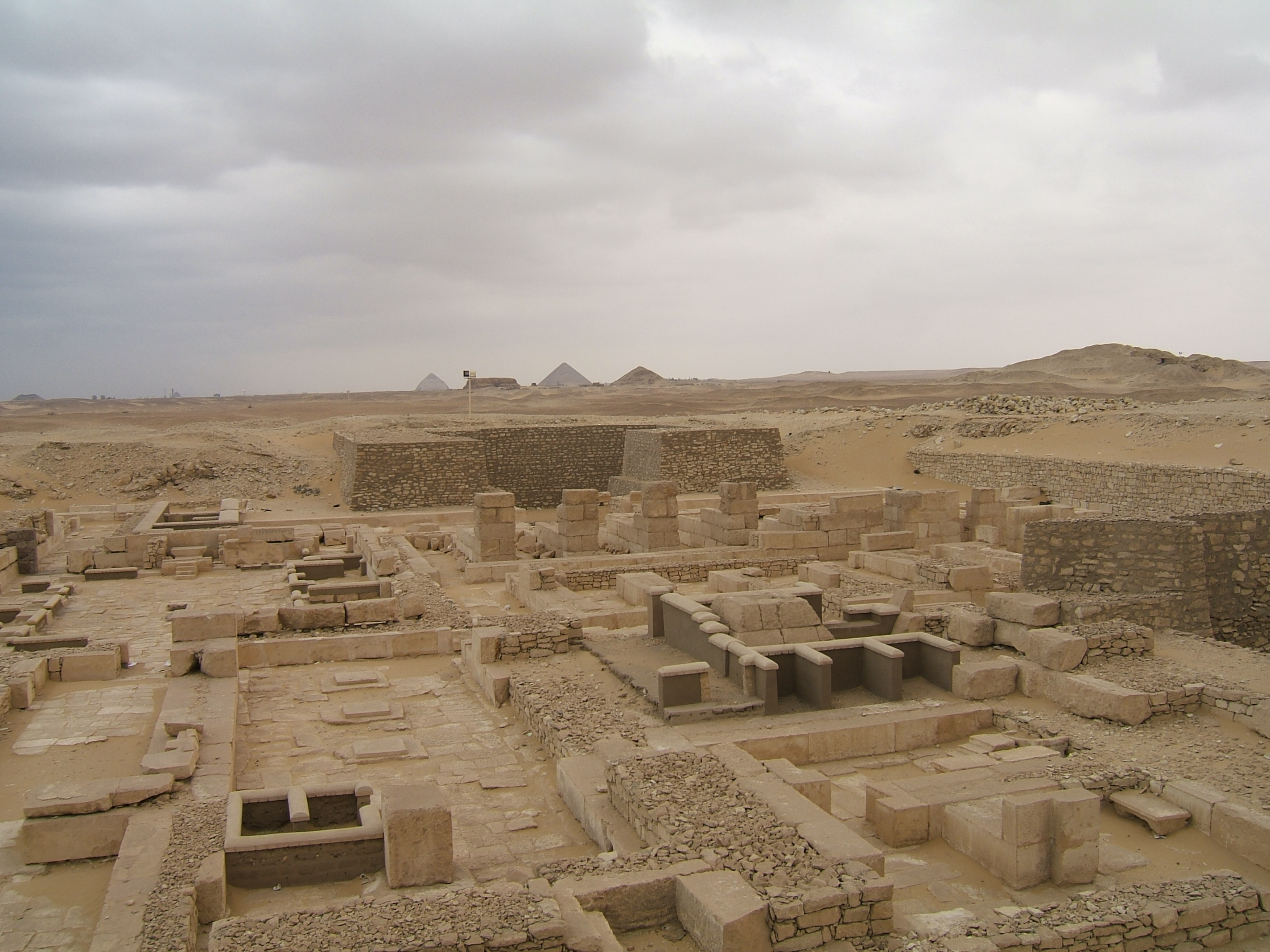
9. **Unearthing the Queen’s Pyramids: A Deeper Look into Royal Burials**: Nestled around the grand pyramids, particularly near Menkaure’s complex, stand smaller, significant structures known as the Queen’s Pyramids. Though often overshadowed, these monuments provide invaluable insights into the broader royal family structure and sacred burial practices beyond the pharaohs. Archaeological evidence continually refines our understanding of these sites.
While Queen Hetepheres I’s tomb offered a rich collection, the Queen’s Pyramids likely housed other prominent royal women. Evidence strongly suggests these were the tombs of queens such as Meretites, one of Khufu’s wives, and a later queen named Henutsen. These discoveries underscore the intricate familial dynamics of the Old Kingdom.
The presence of these subsidiary pyramids near main royal monuments emphasizes the hierarchical court and its profound afterlife beliefs. They served as eternal abodes for those closest to the divine pharaoh, ensuring perpetual connection to royal power and privilege. Each detail contributes to a more complete mosaic of Giza’s dynastic life.
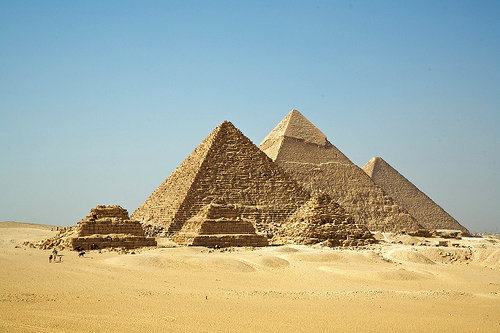
10. **The Grandeur of Khufu’s Solar Barge: An Ancient Vessel’s Journey**: In a remarkable archaeological triumph in 1954 CE, near the Great Pyramid, Khufu’s great solar barge was discovered. Found meticulously disassembled and buried in a pit, this vessel represents the oldest intact ship extant, a marvel of ancient engineering. Its preservation offers an unparalleled window into Fourth Dynasty shipbuilding.
This magnificent wooden vessel measures an impressive 143 feet (43 meters) long and 19 feet (5.9 meters) wide. Its construction demonstrates the carpenters’ mastery of materials and design. The intricate details, from cedar planks to carefully joined components, reveal a society capable of advanced naval engineering for both earthly and spiritual voyages.
The solar barge was believed to be a vessel for the pharaoh’s soul to travel with Ra across the heavens, symbolizing rebirth and eternal journey. Its discovery provided invaluable insights into ancient Egyptian religious cosmology, confirming profound afterlife beliefs. This find continues to evoke wonder, visualizing Khufu’s spiritual voyage.

11. **Giza Beyond the Old Kingdom: The Evolving Necropolis**: The Giza necropolis, precisely conceived during the Old Kingdom, was a model of ordered grandeur. Yet, as centuries unfolded, this sacred landscape evolved, transforming from a strictly regulated royal burial ground into a more expansive city of the dead. This adaptation offers profound insights into changing funerary practices.
After the Old Kingdom, strict adherence to the initial grid pattern waned. Less prominent officials, with wealth, sought burial plots at Giza. Lacking royal authorization, they dug tombs wherever space was available, sometimes above existing structures. This organic growth created a wealth of archaeological material, a layered tapestry of different eras and social strata.
Recent excavations uncovered diverse later tombs belonging to high officials, magistrates, and supervisors. These discoveries reveal Giza’s allure as a burial site extended well beyond the Fourth Dynasty, continuing through the Fifth and Sixth Dynasties and even later periods. The evolving necropolis thus serves as a dynamic historical document, yielding new details.

12. **Giza’s Enduring Landscape: From Ancient Necropolis to Modern Metropolis**: The popular image of the Giza Plateau often depicts remote, wind-swept desert grandeur. However, Giza today presents a striking juxtaposition: the ancient necropolis now sits at the very edge of sprawling modern Cairo. This highlights Giza’s profound historical continuity.
In its ancient heyday, Giza was far from deserted. It was a bustling center of daily activity with administrative buildings, colonnades, terraces, and shops. The worker’s village was a significant settlement, a lively, organized community directly engaged with monumental tasks. The modern cityscape represents the latest chapter in Giza’s long human story.
Today, Giza is Egypt’s third-largest city, capital of its governorate, and integral to the Greater Cairo metropolis, with a population of 4,458,135 as of 2023. This vibrant urban environment, with extensive infrastructure, constantly interacts with the ancient site. It enhances accessibility to the necropolis and Grand Egyptian Museum, ensuring its legacy remains globally relevant.
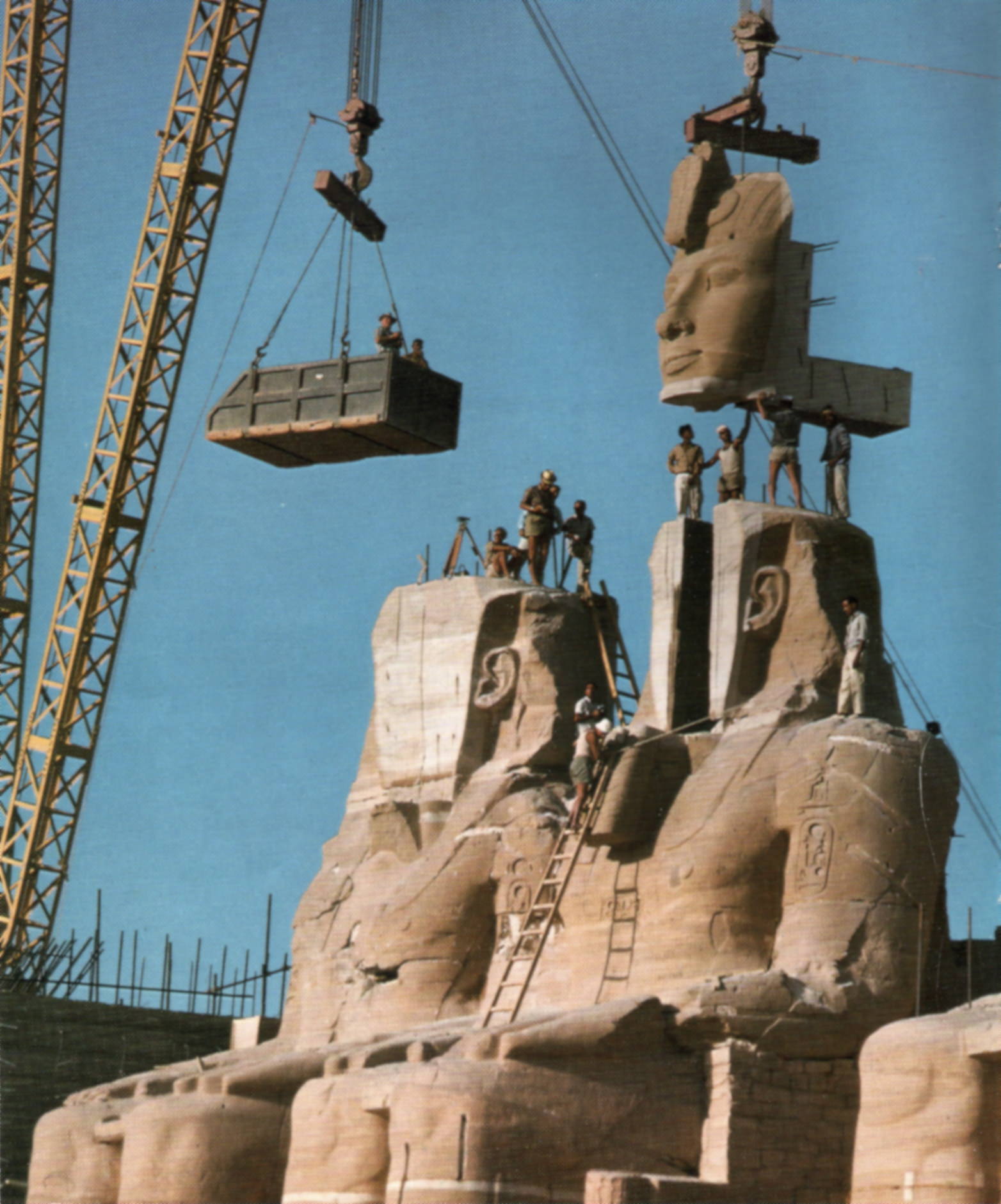
13. **The Logistics of a Colossal Undertaking: Support Personnel and Organization**: Pyramid construction was not merely a feat of engineering and strength; it was an unparalleled logistical and organizational triumph. The scale of moving 2.3 million stone blocks demanded intricate planning, resource allocation, and a vast, specialized support network. This reveals the sophisticated administrative capabilities of the ancient Egyptian state.
Beyond stonecutters and haulers, indispensable “accompanying support personnel” included bakers for sustenance, physicians for health, and priests for religious rituals. These roles were critical for the well-being and morale of thousands of laborers, ensuring smooth operation of this colossal state-run enterprise. Such diverse specialists underscore a highly organized society.
Evidence from workers’ districts, like bakeries and storage, corroborates this extensive support. A permanent workforce of around 20,000 implies a dedicated logistical chain providing continuous food, shelter, medical care, and spiritual guidance. The pyramids’ success stands as much a testament to meticulous organization and robust logistics as to engineering genius.
As we conclude this journey through Giza’s hidden and often overlooked discoveries, it becomes clear this sacred plateau is far more than colossal stone monuments. It is a living archive, continuously revealing layers of human endeavor, belief, and daily life. Each new revelation, from queens’ tombs to workers’ villages or the majestic solar barge, enriches our understanding of a civilization that meticulously planned for eternity. Giza stands as an an enduring symbol of human ambition and ingenuity, where the ancient past continues to speak with profound clarity and endless wonder, inviting us to look closer, delve deeper, and forever marvel at its secrets.



